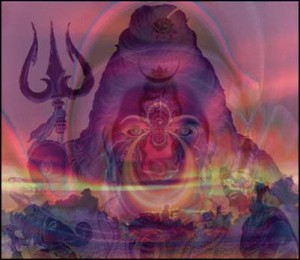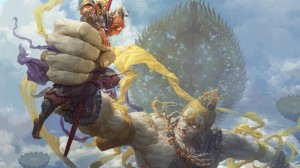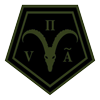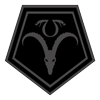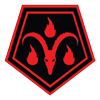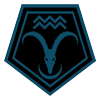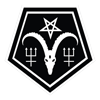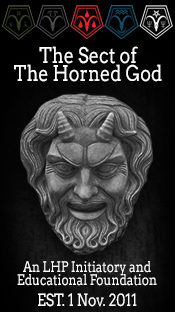Understanding the Eastern Left-Hand Path Traditions
by Thomas LeRoy
Self-deification is not a proclamation, it is a process. One does not announce to the world that they are a god and henceforth reign supreme over all existence. Self-deification is something you strive to obtain, to reach, and once you have entered that state, you must work to remain there. You are then in a relationship with the deified self, and like any relationship you must work at it. A single slip-up and you can be cast out, back upon the Path, to try once more to re-enter. This is why it is important to have an arsenal of knowledge while proceeding down the Left-Hand Path. Some of you stepped upon the Path for the first time when you picked up The Satanic Bible. But The Satanic Bible was only your introduction. It was a mirror that you saw your reflection in. It was not the conclusion.
Reaching out, searching, learning about other modes of transport to help you down the Path is important. And understanding Eastern LHP philosophy is one way.
In the ancient Hindu traditions the Left-Hand Path, or the vamachara, was originally associated with the female aspect and the heterodox way. To put it simply, it is about reversing the natural spiritual flow. Eventually in the 19th century the Left and Right-Hand Paths were introduced into Western occultism by Theosophy founder Helena Blavatsky when she used them as terms to differentiate between white and black magick. To reach self-deification through the vamachara, or by any other practices, you must have a deep understanding of the Self. Atman, one of the most basic concepts in Hinduism, is the universal Self, identical with the eternal core of the personality. Atman is you, for in the early Vedas (holy Hindu writings) it occurred mostly as a pronoun meaning “oneself”. So atman is that which is then “deified” at the end of the LHP. Brahman, on the other hand, is the Absolute. Brahman underlies the workings of the universe, and atman is part of the universal Brahman. Brahman, in Vedic philosophy, is the “World Soul” and is regarded as being the “Three-in-One God” known as the Trimurti. This consists of Brahma the Creator, Vishnu the Preserver, and Shiva the Destroyer, all manifestations, or personifications, of Brahman.
Shiva, with his wild, unpredictable and destructive nature, is perhaps the ideal personification of the eternal core of the personality, or atman. His violent essence is often conveyed through the use of metaphorical images which are designed to resonate with the subconscious. However, Shiva’s destructive persona is not to be feared. The fury of Shiva’s fire only burns away the walls of ignorance. The atman is indestructible; thus, Shiva’s fire represents the awakening of the Self to its true nature and its god-like status. Because of Shiva’s association with the Self, some Shaivists have rebelled against the standards of the orthodox Hindu community. Believing that Shiva is the Self, they can make their own rules; and since all things, good or bad, are an aspect of the Absolute, nothing is taboo. Thus, they carry out bizarre sacrificial and sexual rituals, eat meat (sometimes human), and use mind-altering intoxicants while chanting “Shivoham!” — “I am Shiva!” They believe these activities to be short-cuts to self-deification. But they are not trying to become one with Shiva. Instead they long to deify the atman to become Shiva. A god!
You practitioners of the Western Left-Hand Path traditions may not have much interest in Eastern Philosophy. It may seem odd and confusing because in the Vedic traditions they attempt to say with words that which can not be said with words. It is metaphorical, it is poetry, and it is meant to be experienced, not critically analysed nor blindly believed. But still it is important that one is aware that there are other deities besides Satan and Lucifer that speak to our inherent nature. And Shiva speaks loudly. If you but only listen.
